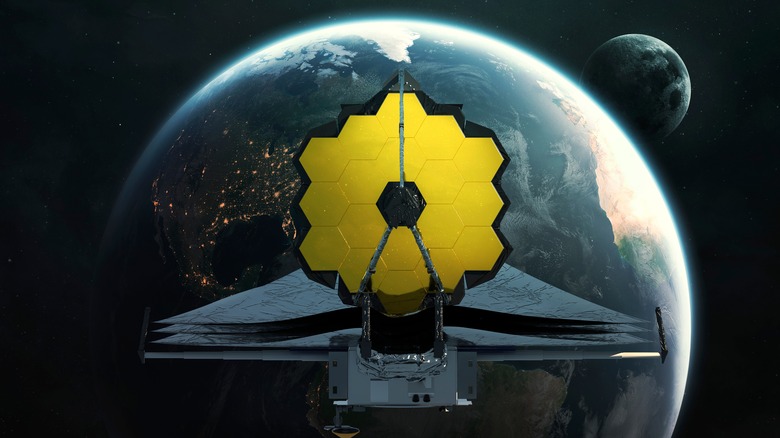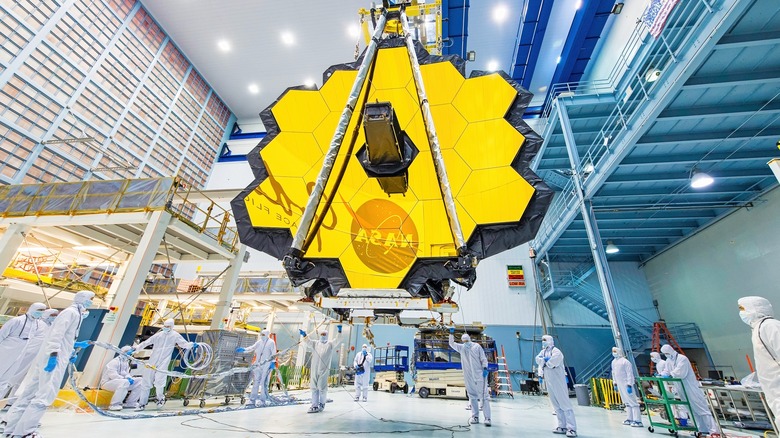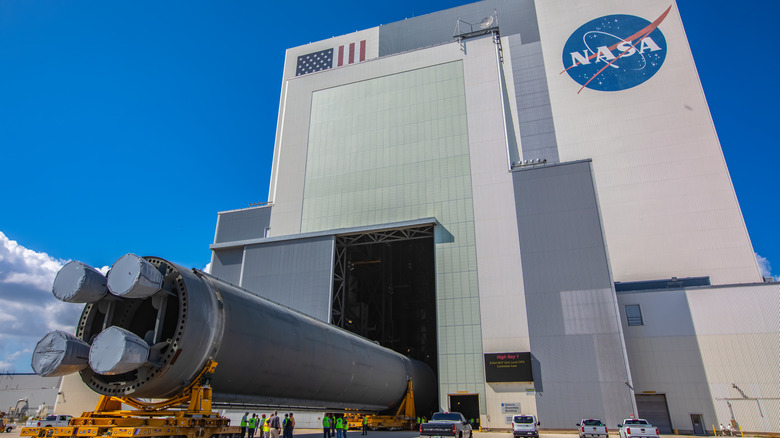The Total Cost Of The James Webb Space Telescope Is Out Of This World
The James Webb Space Telescope (JWST) is one of the most epic NASA missions, but the exploration of the universe doesn't come cheap. The space agency has always walked a fine line when it comes to its budget. All NASA operations are funded through the U.S. Federal Budget and therefore are public spending. Since the days of the Cold War and the first space race when NASA was born to compete against Russia, the organization has had to sell its missions not only to Congress and the administration, but also to the American public.
NASA still faces resistance to this day over budget allocation and political opposition, and its financial maneuvering is influenced by public perceptions. Despite that, some say NASA is underfunded given the impact of its work and the complexity of its missions. As reported by the space agency in its budget request, NASA had asked for $25.2 billion in funding for 2021, though it was ultimately given less at $23.3 billion (via AIP).
While that may seem like a big figure, The Planetary Society, which was co-founded in 1980 by Carl Sagan to ensure the public interest in space is met by government investment, reveals that the budget accounts for just 0.32% of the money spent by the U.S. government.
How much did the James Webb Space Telescope cost?
The James Webb Space Telescope ended up being one of the most expensive NASA projects, requiring more than 24 years to build and launch while ultimately costing $9.7 billion, according to The Planetary Society. Additionally, the European Space Agency (ESA), an active partner of the mission, invested more than $754 million in developing four science instruments for the telescopes. The Canadian Space Agency also pitched in about $158 million in scientific instruments.
Breaking down the project, it's revealed that NASA spent $8.8 billion developing the spacecraft required to put the largest space telescope ever built in an orbit 1.5 million miles from Earth, which is farther away than our moon. The budget to operate the telescope for the first five years was set at $861 million. Once inflation kicks in, the total cost of the mission is expected to rise to an astronomical $10.8 billion.
The costs will be worth it in the long run
The total spending, again, may seem like a big number, but NASA spread the investments over more than two decades and the JWST budget never exceeded more than 3% of the space agency's annual budget. That said, NASA had originally estimated that the telescope would launch sooner and cost billions less. The space agency's 2010 ICRP report revealed that NASA thought it was 70% likely the JWST would launch in 2014 and cost about $5 billion. However, management, budget, and technological developments forced the mission to restructure, leading to delays and budget increases.
Was it all worth it? NASA says that for every dollar spent in space, thousands of jobs are created, businesses are kickstarted, and the national economy grows. The agency's 2020 Economic Impact Study, for example, reveals the positive impacts NASA and its efforts had on the economy. Among other things, the report details an economic output of $64.3 billion, 312,000 new jobs nationwide, and $7 billion in federal, state, and local tax revenue raised.
From a scientific point of view, the contributions that the James Webb Space Telescope will generate are countless. The JWST is 100 times more powerful than Hubble, which has already rewritten the textbooks of science, physics, astrophysics, astrobiology, and many other fields. Webb, meanwhile, will be used to study exoplanets, search for evidence of potential life beyond our solar system, unravel the big bang, conduct cosmic surveys, and provide a deeper understanding of the mysterious ways of our universe.


